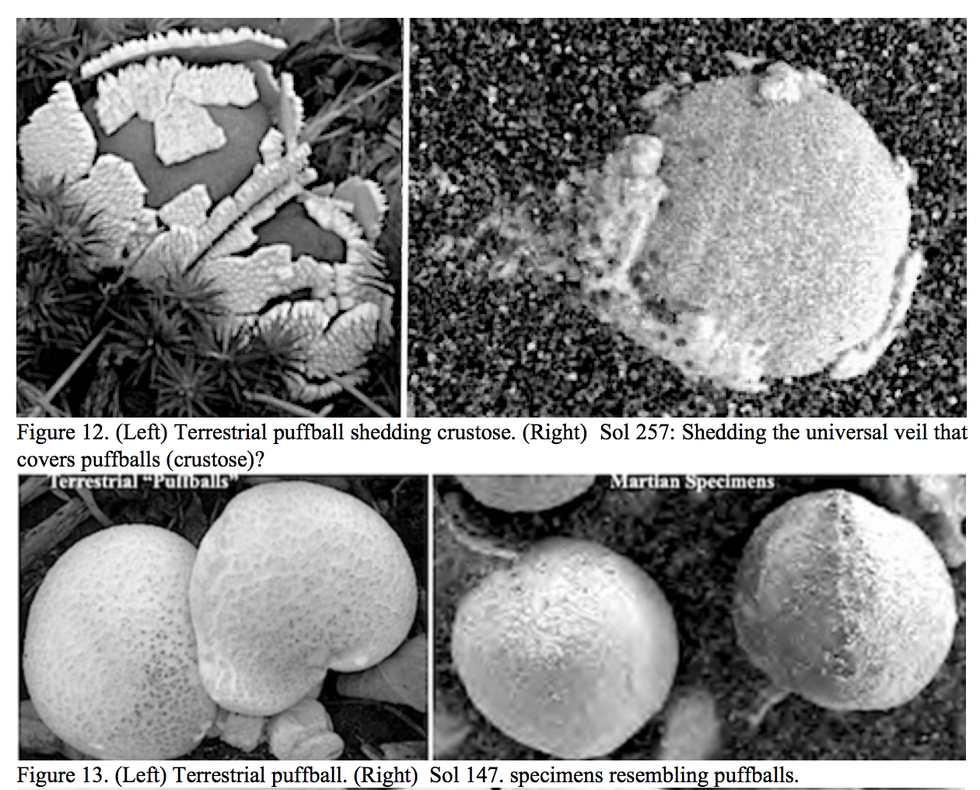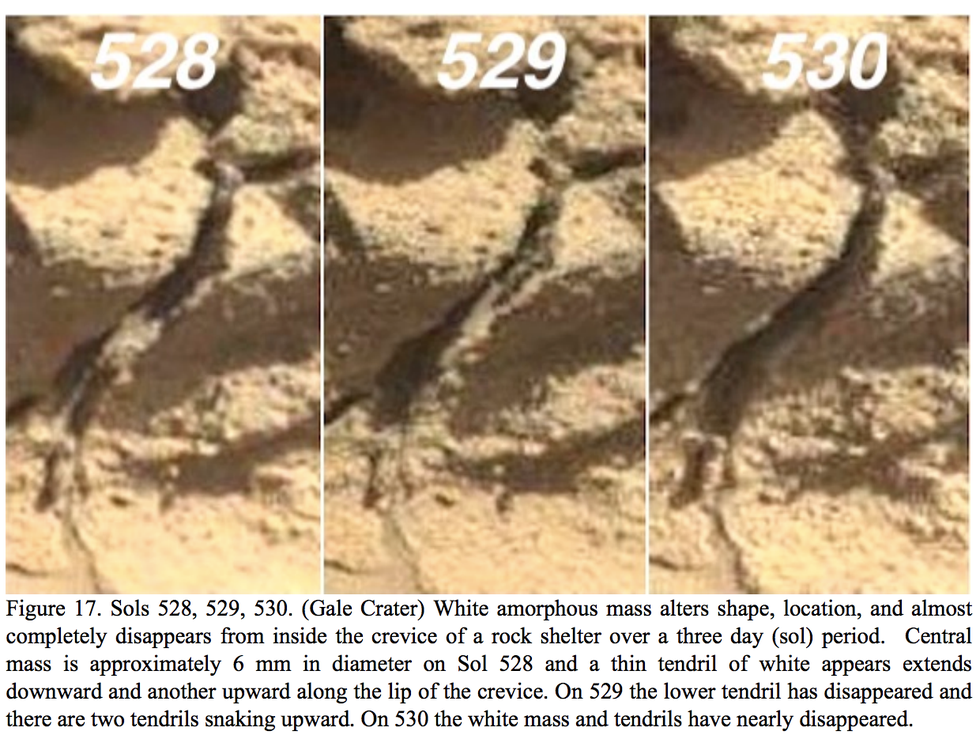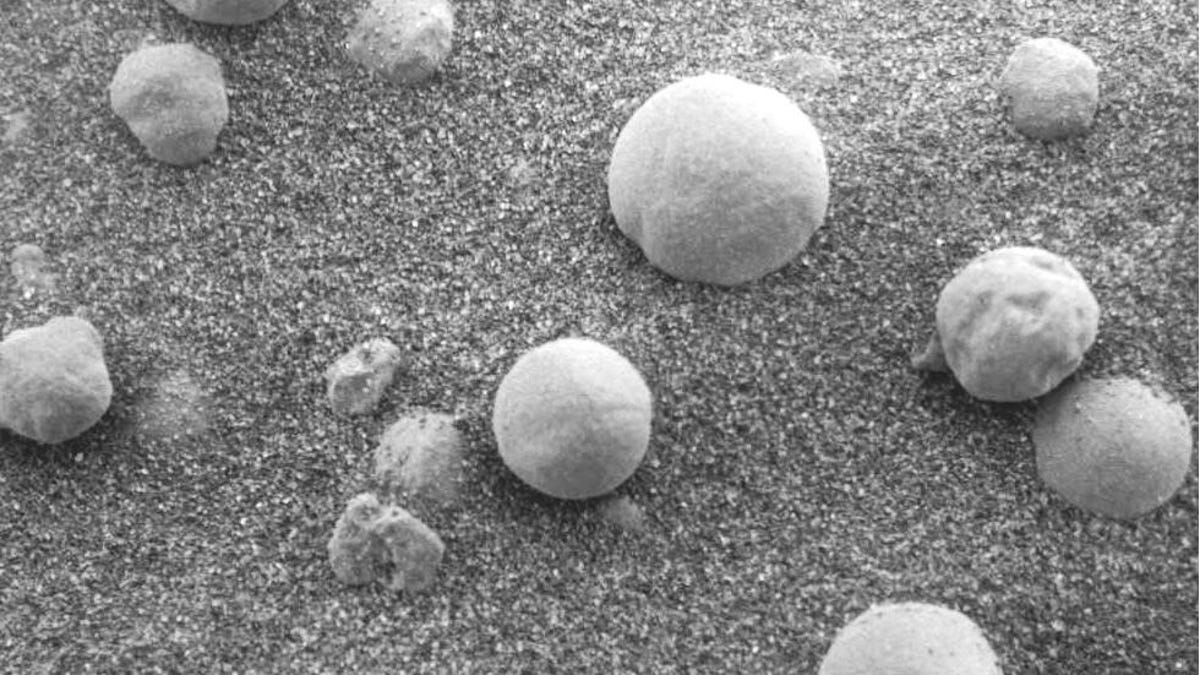Maiden Voyage
Gold™ Member
Scientists Believe These Photos Show Mushrooms on Mars—and Proof of Life — Popular Mechanics
The claim is bound to cause controversy. See the possible evidence.
Cool stuff here.
Scientists claim NASA photos show mushrooms growing on Mars.
In their paper, the scientists analyze a variety of images taken by NASA's Opportunity and Curiosity rovers, as well as the Mars Reconnaissance Orbiter's HiRISE camera.
Mushrooms could be great for multiple purposes for Mars settlers.
Could there be mushrooms on Mars? In a new paper, an international team of scientists from countries including the U.S., France, and China have gathered and compared photographic evidence they claim shows fungus-like objects growing on the Red Planet.
In their paper, which appears in Scientific Research Publishing's Advances in Microbiology, the scientists analyze images taken by NASA's Opportunity and Curiosity rovers, plus the Mars Reconnaissance Orbiter's HiRISE camera. The objects in question show "chalky-white colored spherical shaped specimens," which the Mars Opportunity team initially said was a mineral called hematite.
Later studies refuted the hematite claim. Soon, some scientists coined the term "Martian mushrooms" to describe the mysterious objects, because of how they resemble lichens and mushrooms, while in another study, fungi and lichen experts classified the spheres as "puffballs"—a white, spherical fungus belonging to the phylum Basidiomycota found on Earth.
In the new paper, the scientists point to a set of Opportunity photos that shows nine spheres increasing in size, and an additional 12 spheres emerging from beneath the soil, over a 3-day sequence. The researchers claim Martian wind didn't uncover the amorphous spheres, and that they "expand in size, or conversely, change shape, move to new locations, and/or wane in size and nearly disappear."

The scientists continue:
"Many of these ground-level spherical specimens also have stalks or have shed portions of their outer membranes—possibly crustose—and are surrounded by white chunks and fluffy spore-like material that may consist of leprose."
Crustose and leprose are kinds of fungus surface textures, where crust or scales form and can flake away.

The presence of these peripheral parts is important, the scientists say, because it helps them make the case that what we're seeing really is fungus instead of simply some spherical rocks. Mushrooms grow and reproduce like gangbusters—it's one of the defining characteristics of the entire family of fungi. Small mushrooms grow in about a day, while large mushrooms take up to 4 days.
In their research, the scientists carefully document all the ways their proposed fungi change from one photo to the next. "White amorphous mass alters shape, location, and almost completely disappears from inside the crevice of a rock shelter over a three day (Sol) period," they explain of one image set, shown below.

Besides something like a gust of wind blowing away loose sand, fungi are one of the only living things that could experience such noticeable growth and change in just a few days.
The scientists acknowledge the "evidence" they present isn't ironclad, and seem to predict the scrutiny that will inevitably come with their paper, writing that "similarities in morphology are not proof of life."
"It is possible that all the specimens presented here are abiotic. We cannot completely rule out minerals, weathering, and unknown geological forces that are unique to Mars and unknown and alien to Earth. However, growth, movement, alterations in location and shape, constitute behavior, and coupled with life-like morphology, strongly support the hypothesis there is life on Mars."
But if there really were mushrooms on Mars, what would that mean in a future where humans hope to settle on the Red Planet? Well, the scientists say many fungi on Earth are also extremophiles—meaning organisms that can thrive in conditions considered "extreme" in terms of the usual building blocks of life. So to find mushrooms on Mars is perhaps less surprising than we think.
In his 2018 novel Red Moon, Kim Stanley Robinson imagined a moon settlement with fast-growing bamboo as its primary building material. It's not hard to imagine fungus used as anything from a building material, to an insulator, to even a hypothetical food source for Mars residents or their livestock animals.


No, NASA photos are not evidence of fungus growing on Mars, sorry
Despite what you might have read, the claims about life on Mars are shoddy and unscientific.
Last edited:














